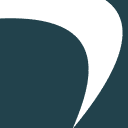How to Minimize the Costs Associated with the Potential Threat of Aircraft Icing
During the icy, cold winter months from December to February, the increased threat of aircraft icing can cost you thousands of dollars in costly de-icing bills. Oftentimes, jet charter travelers are unaware of the potential threat of aircraft icing and the costs associated with de-icing. Fully understanding the ways you can minimize the costs of potential aircraft icing can help save you thousands of dollars off your next winter charter flight.
Aircraft icing occurs when moisture in the air freezes, turns to ice, and accumulates on the surface of a private aircraft. Icing can occur anywhere, at any time, but it generally occurs more where is plenty of moist air and freezing conditions. Aircraft icing poses a serious threat to jet charter flights because it disrupts the smooth flow of air over an aircraft. Aerodynamically speaking, this causes a significant reduction in your aircraft’s ability to generate lift, and increases the amount of drag on your aircraft. In terms of safety, aircraft icing can cause your pilots to lose control of your aircraft, endangering your personal safety.
Stowing your charter jet in a heated hangar is perhaps the most effective way to prevent aircraft icing. If you leave your private jet parked on the tarmac (in freezing cold conditions where there is moist air), snow, frost or ice will likely accumulate on the surface of your aircraft. Under Federal Aviation Regulations, you are not allowed to take-off in an aircraft if there is snow, frost or ice on the wings, tail or other critical surface of the aircraft. If ice does accumulate on your aircraft, de-icing is the only way you can safely and legally depart from your location.
De-icing can usually be accomplished by spraying your aircraft with propylene glycol, a de-icing fluid (similar to antifreeze) that lowers the freezing point of ice. Depending on the amount of ice frozen on your aircraft, it can take anywhere from a few minutes to several hours to de-ice your charter jet. During that time, you will have no other choice but to wait for airport personnel to de-ice your aircraft. Once your aircraft is completely free of ice, you will have a short 15-minute window to take-off from your location.
As a rule, de-icing fluid is very expensive, but the cost of de-icing ultimately depends on the size of your aircraft and the severity of the icing. After a light snow flurry, for example, de-icing your jet may only cost you a few hundred dollars. After a severe Nor’easter that lasted a few days, however, de-icing could cost well into the thousands of dollars. Hangar rentals, on the other hand, can cost anywhere from $250 to $500 per night, depending on the size of your aircraft. A good way to think of hangar rentals are as an investment or protection plan against the high cost and expense of de-icing your charter jet aircraft.
Another way to avoid aircraft icing on the ground is to always arrive early or on-time at your departure airport. Before you arrive at the airport on the day of your charter flight, your fixed-base operator will usually move your aircraft out of the hangar onto the nearest ramp for your convenience. The longer you leave your aircraft waiting for you outside, the longer it has to accumulate snow, frost or ice on its surface. Arriving on-time or just a few minutes early can help prevent aircraft icing and save you thousands of dollars in de-icing bills.
Working with an expert private flight advisor who can accurately predict the potential threat of aircraft icing can also prevent icing delays and costly de-icing fees. At Stratos Jet Charters, our air charter consultants are expertly trained to know when and how to avoid aircraft icing. In the event your destination airport reports icing conditions, our private flight advisors can typically reserve a heated hangar for your charter aircraft. If hangar rentals are unavailable, our agents can typically arrange for your charter flight to land at an alternate airport with hangar services or less-prevalent icing conditions.
By working with a Stratos Jets private flight advisor, arriving on-time, or utilizing hangar services, you can successfully avoid the potential threat of aircraft icing and costly de-icing fees this winter season.
Are you ready to book your Private from Los Angeles to New York charter flight yet?
Our friendly, expert air charter agents are here to answer questions or start your quote today. Don`t wait, call now and we'll get you on your way to your destination!
Call 888-593-9066











